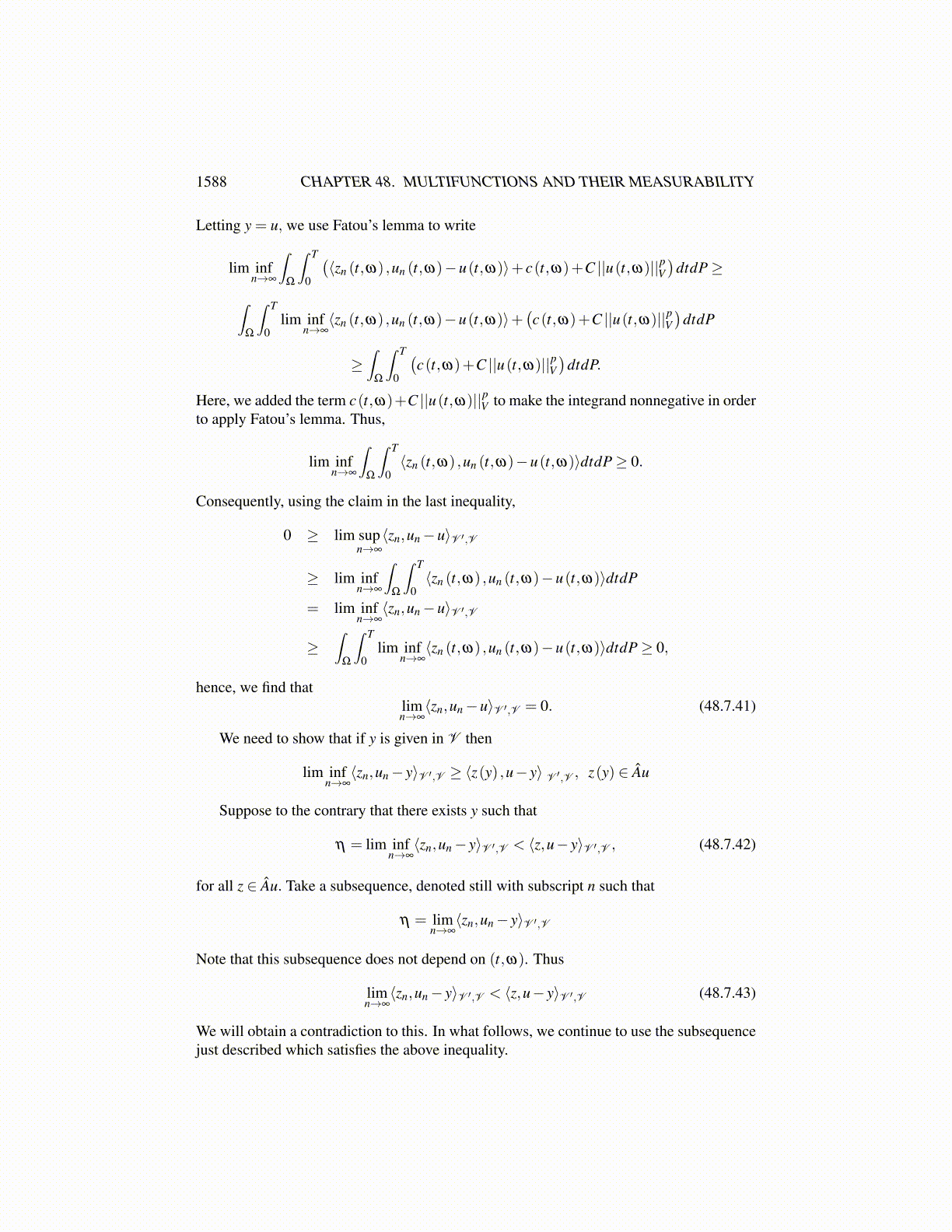
1588 CHAPTER 48. MULTIFUNCTIONS AND THEIR MEASURABILITY
Theorem 48.7.4 Suppose conditions 1 - 5 hold. Also, suppose U is a separable Hilbertspace dense in V, a reflexive separable Banach space with the inclusion map compact andV is dense in a Hilbert space H. Thus
U ⊆V ⊆ H = H ′ ⊆V ′ ⊆U ′,
Then, the operator  in the definition 5 satisfies the following.Hypotheses:
un→ u weakly in V , lim supn→∞
⟨zn,un−u⟩V ′,V ≤ 0,
for zn ∈ Âun. For each ω, off a set of P measure zero N, every subsequence of un (t,ω) hasa further subsequence, possibly depending on t,ω such that
un (t,ω)→ u(t,ω) weakly in U ′,
Assume also thatsup
ω∈Ω\Nsup
nsup
t∈[0,T ]λ |un (t,ω)|H < ∞. (48.7.35)
Conclusion: If the above conditions hold, then there exists z(v) with
lim infn→∞⟨zn,un− v⟩V ′,V ≥ ⟨z(v) ,u− v⟩V ′,V .
where z(v) ∈ Â(u).
Proof: It was argued above that Â(u) is closed and convex. Let Σ have measure zeroand for each (t,ω) /∈ Σ, zn (t,ω) ∈ A(un (t,ω) , t,ω) for each n. Now Σω has measure zerofor a.e. ω since otherwise Σ would not have measure zero. These are the ω of interest inthe following argument, and we can simply include the exceptional ω in the set of measurezero N which is being ignored since it has measure zero.
First we claim that if t /∈ Σω , then
lim infn→∞⟨zn (t,ω) ,un (t,ω)−u(t,ω)⟩ ≥ 0.
Proof of the claim: Let t /∈ Σω be fixed and suppose to the contrary that
lim infn→∞⟨zn (t,ω) ,un (t,ω)−u(t,ω)⟩< 0. (48.7.36)
Then, there exists a subsequence {nk}, which may depend on t,ω , such that
limk→∞⟨znk (t,ω) ,unk (t,ω)−u(t,ω)⟩ (48.7.37)
= lim infn→∞⟨zn (t,ω) ,un (t,ω)−u(t,ω)⟩< 0. (48.7.38)
Now, condition 3 implies that for all k large enough,
b3∣∣∣∣unk (t,ω)
∣∣∣∣pV −b4 (t,ω)−λ
∣∣unk (t,ω)∣∣2H <
∣∣∣∣znk (t,ω)∣∣∣∣
V ′ ||u(t,ω)||V